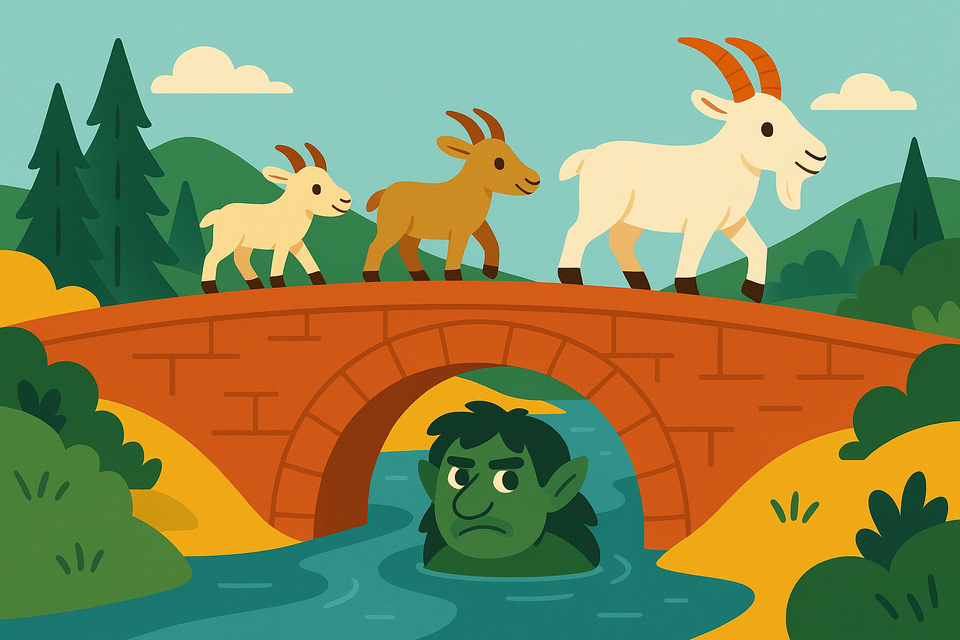Learn Norwegian Through Stories – Free A1 Folktale Sample

Enjoy a beginner-friendly bilingual story with side-by-side English and Norwegian text, as well as native audio.
Perfect for self-study, travel prep, or just falling in love with the language.
- Fun, short, and easy to read classic Norwegian folktale rewritten for A1 learners
- Side-by-side English translation to boost comprehension
- Vocabulary lists of useful A1 words
- Native Norwegian Audio
Below we have provided you with a sneak preview of the first part (of totally 5 parts) of the free sample chapter with the story Bukkene Bruse The Three Billy Goats Gruff. Subscribe to get the whole story!
Each part of the story includes:
- a vocabulary list
- a side-by-side translation
- comprehension questions
- audio
We have also created Quizlet stacks with the vocabulary from all the stories – if you want to actively study the words.
Vocabulary
Norwegianen
Englisha/an
Pronunciationlike English “en” in “enter,” but with a shorter and softer vowel
NotesIndefinite article for nouns of common gender. Equivalent to a/an in English. The other article is: et (neuter). You might also see ei, which is an informal/alternative article for feminine nouns.
Norwegiantre
Englishthree
Pronunciationlike “tray” but shorter and with a rolled or tapped ‘r’
NotesNumber word. Comes after to (two), before fire (four).
Norwegianbukker
English(male) goats
PronunciationBOOK-er, like "book" + "er"
NotesNoun. Base form: en bukk. The definite form is bukken. bukker is the plural form. The plural definite is bukkene (the goats).
Norwegiande
Englishthey
Pronunciationlike English "dee" as in "deer"
NotesPronoun.
Norwegianhet
Englishwas/were called
Pronunciationlike "heat" but with a shorter 'ee' sound
NotesIrregular verb. Base form: å hete. Present: heter.
Norwegianvar
Englishwas/were
Pronunciationvaah-r, like "vaa" as in "father" + soft 'r' at the end
NotesIrregular verb that is essential in Norwegian. Base form: å være. Past tense: var. Present: er.
Norwegianliten
Englishsmall
Pronunciationleet-en, like "lean" + "ten", but the 'e' is softer and the 'n' is a bit softer
NotesAdjective. Other forms: lite, små. Opposite: stor (big).
Norwegianstor
Englishbig
Pronunciationstoohr, like "store" but with a slightly longer 'o' sound and a rolled 'r' at the end
NotesHigh-frequency size adjective. Useful across many contexts. Opposite: liten.
Text
Bukkene Bruse – del 1 av 5.
Det var en gang tre bukker.
De het Bukkene Bruse.
Den første bukken var liten.
Den andre bukken var mellomstor.
Den tredje bukken var stor.
De bodde i en dal.
Side-by-side Translation
Comprehension questions
-
Hvor mange bukker er det i historien?
How many goats are there in the story? -
Hva heter bukkene?
What are the goats called? -
Er den første bukken stor eller liten?
Is the first goat big or small?
Answers to the comprehension questions
-
Tre bukker.
Three goats. -
Bukkene Bruse.
The Billy Goats Gruff. -
Liten.
Small.
